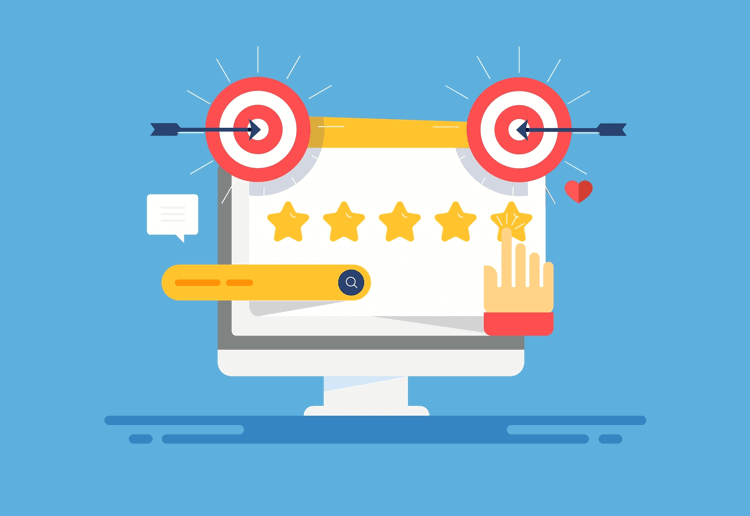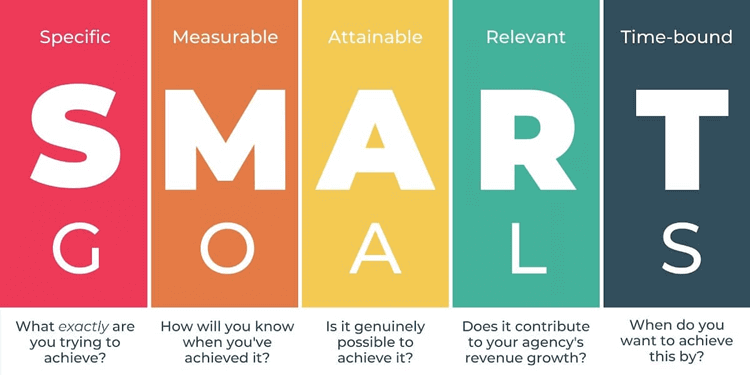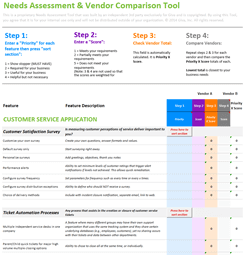Top 10 Customer Satisfaction Goals: Achieving Business Success
In today's business landscape, where online reviews and customer feedback can make or break a brand, customer satisfaction goals play a critical role. These goals, when thoughtfully crafted, act as a compass-guiding businesses to address specific pain points, tailor products or services to evolving needs, and innovate where necessary.
Achieving these benchmarks signals a deeper understanding of customer preferences, needs, and desires. Businesses that excel in setting and reaching customer satisfaction goals often see direct results: higher retention rates, more referrals, and a distinct competitive advantage in their markets.

What Are Customer Satisfaction Goals?
Customer satisfaction goals are measurable targets designed to improve how customers perceive your business. They focus on creating positive customer experiences and strengthening loyalty.
Unlike general customer service goals, which may emphasize internal efficiency, satisfaction goals always prioritize how the customer feels about their interaction with your brand.
They are important because they directly impact your bottom line. Businesses that consistently set good customer satisfaction goals and meet them see:
- Higher retention and loyalty
- Increased referral rates
- Reduced acquisition costs (ie. happy customers bring in new ones)
- Stronger brand reputation in competitive markets
SMART Goals in Customer Service
The SMART acronym stands for Specific, Measurable, Achievable, Relevant, and Time-bound. When setting goals, particularly in the realm of customer service, they should meet these criteria to be effective.
What Are SMART Customer Service Goals?
- Specific: The goal should be clear and specific. Instead of saying "improve customer service," one might say, "increase positive customer feedback by 15%."
- Measurable: There should be a metric or a way to measure the progress and achievement of the goal. Using customer feedback surveys can be a good metric in our previous example.
- Achievable: Goals should be realistic and attainable. They should push your team but remain within reach.
- Relevant: They should align with the business's overarching objectives. For instance, if a company is looking to expand its market, improving customer service might directly relate to retaining new customers.
- Time-bound: There should be a deadline for achieving the goal, such as "by the end of the fiscal year."

Criteria for a Good SMART Goal in Customer Service
- Alignment with Business Objectives: If a company's primary goal for the year is to expand into new markets, then a related customer service goal might be "provide multilingual support to cater to international customers by Q3."
- Feedback-driven: Effective customer service goals often rely on feedback. For instance, if survey results indicate a need for faster response times, a measurable customer service goal might be "reduce average email response time to under four hours."
- Focus on Customer Satisfaction: Goals that directly impact customer satisfaction are paramount. An example of a customer satisfaction goal might be "increase our net promoter score (NPS) by 10 points within six months."
- Continual Improvement: Always look for ways to better the customer experience. For instance, "implement a new training program for customer service reps to handle complex queries more efficiently by Q2."
- Clear and Concise: It should be easy for any team member to understand the goal and its importance. For instance, "achieve a 95% satisfaction rate on post-call surveys by December" is clear and to the point.
When using SMART criteria for your customer service goal setting, you set the stage for clearer communication, better team alignment, and a higher chance of achieving those objectives, ultimately driving higher customer satisfaction.
Watch Our Video on the Top 10 Customer Satisfaction Goals
10 Essential SMART-Driven Customer Satisfaction Goals
-
Prioritize Feedback Channels
Create and maintain accessible channels for customers to provide feedback.
This will make it easier for customers to share their opinions, leading to more insightful business decisions.
Examples
- Short Term: Launch a quarterly post-purchase email survey
- Long Term: Develop a centralized Voice of the Customer program with multi-channel inputs
-
By Industry:
- Retail: Collect product return feedback to improve future stock
- Healthcare: Use patient satisfaction surveys to improve appointment scheduling
- SaaS: Gather in-app feedback to refine UX features
How to Implement and Measure
Integrate feedback tools on your website, set up comment boxes, and run periodic surveys with outreach via email.
Use a dashboard to track the number of feedback entries weekly per channel (e.g., website, email surveys). Categorize feedback as positive, neutral, or negative and calculate the percentages in each category monthly.
Metrics to Track:
- Survey response rate
- Number of feedback entries
- Percent actionable insights
-
Ensure Consistency Across All Touchpoints
Deliver a consistent brand and service experience, no matter where or how a customer interacts with your business.
This will help build trust and reliability, crucial factors for customer retention.
Examples
- Short Term: Standardize tone of voice in email and chat templates this quarter
- Long Term: Achieve brand consistency across global branches within 2 years
-
By Industry:
- Banking: Ensure uniform compliance messaging across branches and online
- Hospitality: Deliver identical service standards across multiple hotel locations
- SaaS: Provide identical support SLAs across chat, phone, and ticketing
How to Implement and Measure
Standardize training, resources, and tools across departments. Regularly audit different touchpoints — be it the website, in-store experience, or customer support — to ensure consistency.
Deploy quarterly customer surveys asking specifically about consistency in brand experience across touchpoints like website, in-store, and customer support. Use a 1-5 rating scale and calculate the average score for a quarterly review.
Metrics to Track:
- Consistency survey score
- Error rates in service delivery
- Brand trust scores
-
Tailor Customer Experience
Personalize the customer journey based on preferences and past interactions.
This can increase customer engagement and satisfaction by making interactions more relevant and meaningful.
Examples
- Short Term: Personalize subject lines in marketing emails
- Long Term: Implement AI-driven personalization for all customer touchpoints
-
By Industry:
- Retail: Personalized discounts based on shopping history
- Healthcare: Tailored follow-up reminders by appointment type
- SaaS: Role-specific onboarding journeys
How to Implement and Measure
Use CRM tools and analytics to understand customer behavior and make relevant offers based on these observations.
Track metrics for personalized offers and customer satisfaction scores for personalized interactions.
Metrics to Track:
- Click-through rate
- Repeat purchase rate
- Churn reduction
- Personalization CSAT
-
Prioritize Proactive Customer Communication
Don't just react to customer needs; anticipate them to improve overall satisfaction and trust.
This can increase loyalty by showing customers that you understand and cater to their needs before they express them.
Examples
- Short Term: Send alerts about service disruptions before customers report them
- Long Term: Build predictive models to anticipate customer churn and intervene
-
By Industry:
- Utilities: Notify customers of outages ahead of time
- SaaS: Warn customers of storage limits before they hit capacity
- Retail: Proactively offer style suggestions based on seasonal purchases
How to Implement and Measure
Use customer data and previous interaction history to proactively reach out to customers. This can be through personalized tips, product recommendations, or even advanced solutions to problems they might not know they have yet.
Track metrics for proactive outreach campaigns. Monitor customer feedback specifically related to these proactive communications to assess their impact.
Metrics to Track:
- Churn rate
- Campaign open rates
- Conversions from proactive outreach
-
Leveraging Real-Time Data for Immediate Actions
Utilize real-time analytics tools to monitor customer interactions and feedback as they happen.
This allows your customer service team to make immediate adjustments and proactively address issues, enhancing customer satisfaction in real time.
Examples
- Short Term: Monitor live chat queues and deploy staff to spikes in demand
- Long Term: Automate escalations with AI when satisfaction drops below a threshold
-
By Industry:
- E-commerce: Track cart abandonment in real-time and send incentives
- Call Centers: Reallocate agents dynamically to reduce wait times
- Healthcare: Monitor patient portal queries to prevent appointment bottlenecks
How to Implement and Measure
Integrate real-time analytics tools into your customer service software. Once this is done, train your customer service staff to continuously monitor key metrics like the current customer queue and average response time. The team should also be prepared to act immediately on critical triggers. For example, high-priority issues should be escalated instantly, and if wait times exceed 10 minutes, automated messages should be sent to customers who are waiting.
Set up Key Performance Indicators (KPIs) and set a goal to improve them by a certain percentage within a defined period.
Metrics to Track:
- Real-time CSAT scores
- Average Time to Resolution
- Percentage First Call Resolution (FCR)
-
Invest in Training and Development
Elevate the skills and knowledge of your customer service team.
This can help make sure each customer service agent has the necessary skills and knowledge to resolve customer issues effectively, leading to faster resolution times and higher customer satisfaction scores.
Examples
- Short Term: Run a soft skills workshop for all new hires
- Long Term: Establish a continuous learning program with quarterly certifications
-
By Industry:
- Call Centers: Improve handling of escalations
- Healthcare: Train front-office staff on patient empathy
- Banking: Ongoing compliance and customer communication training
How to Implement and Measure
Conduct regular training sessions, workshops, and seminars on best practices.
Conduct pre-training and post-training assessments using a standardized skills test. Compare the average scores to quantify the improvement in team competencies.
Metrics to Track:
- Average training hours per agent
- Post-training CSAT
- Agent retention
-
Recognize and Reward Loyalty
Appreciate customers who stick with your brand over time.
This can incentivize repeat business and foster a long-term relationship with customers.
Examples
- Short Term: Launch a referral discount for existing customers
- Long Term: Build a multi-tier loyalty program with escalating benefits
-
By Industry:
- Retail: Tiered rewards programs (eg. bronze/silver/gold)
- Healthcare: Loyalty perks for preventive care participation
- SaaS: Discounted renewals for multi-year contracts
How to Implement and Measure
Develop loyalty programs, offer exclusive discounts, and provide special offers.
Track statistics monthly, quarterly and year over year for growth or decline.
Metrics to Track:
- Customer Lifetime Value (CLV)
- Program participation rate
- Referral-generated revenue
-
Highlight Customer Service Goals Example
Showcase a real-life example where you've achieved high levels of customer service.
This can validate your customer service efforts and inspire trust in potential and current customers.
Examples
- Short Term: Publish a monthly customer success spotlight on social media
- Long Term: Develop a library of case studies segmented by industry
-
By Industry:
- SaaS: Case studies on reduced downtime or ROI
- Retail: Social proof through customer review highlights
- B2B Services: Whitepapers demonstrating client wins
How to Implement and Measure
Share success stories and testimonials that act as a model of great customer service on your website and social media.
Use analytics tools to monitor the number of views, likes, and shares each published success story or testimonial receives within the first 30 days.
Metrics to Track:
- Testimonial engagement
- Referral volume
- Case study downloads
-
Stay Updated with Industry Best Practices
Keep an eye on industry trends and standards in customer service.
This will help your team continuously adopt new customer service best practices and technologies that keep you ahead of competitors, thereby enhancing customer loyalty and increasing market share.
Examples
- Short Term: Attend a webinar on emerging customer experience tools
- Long Term: Implement AI-powered self-service over 2 years
-
By Industry:
- Healthcare: Adopt HIPAA-compliant telehealth support practices
- Retail: Integrate omnichannel support platforms
- Banking: Implement secure chatbots for instant support
How to Implement and Measure
Subscribe to industry journals, attend seminars, and participate in relevant webinars.
After implementing a new best practice, conduct a short customer survey and internal staff poll within 60 days. Use a scale of 1-5 to rate the effectiveness and analyze the average scores of both your employees and clients alike.
Metrics to Track:
- Adoption rates of new tools
- Internal/external satisfaction with changes
-
Continuously Refine Your Customer Service Goal Setting
Regularly reassess and adjust your customer service objectives.
This will help you quickly adapt to evolving customer preferences and market trends, thereby ensuring that service quality consistently meets or exceeds industry standards, resulting in higher customer retention rates.
Examples
- Short Term: Adjust response time targets after analyzing quarterly call data
- Long Term: Establish an annual goal-review cycle tied to customer journey mapping
-
By Industry:
- SaaS: Update SLA goals to reflect faster market expectations
- Retail: Adjust delivery satisfaction targets during peak seasons
- Healthcare: Reassess patient satisfaction goals as new regulations emerge
How to Implement and Measure
Analyze performance metrics, gather team feedback, and realign based on changing business needs.
After each quarterly review, examine specific performance indicators like customer churn and First Call Resolution rates. Simultaneously, hold a focus group with customer service staff to identify any gaps between objectives and actual performance.
Metrics to Track:
- Goal achievement rate
- First Call Resolution (FCR)
- Churn improvement after adjustments
- Staff adoption rate
The Bottom Line: Enhancing Customer Support With Satisfaction Goals for Today's Business Challenges
In today's fast-paced business world, issues like delayed ticket responses and repetitive customer interactions can hinder higher customer satisfaction.
Thankfully, Giva's cloud-based customer service ticketing platform is designed to combat these challenges.
With Giva's knowledge base software and Knowledge AI Copilot, agents can quickly tap into archived solutions to solve familiar issues.
The Customer Self-service Portal provides users a way to find answers on their own, lessening the demand on live support.
Additionally, Giva offers tools for task automation, prioritizing critical issues with Tsunami Tickets™, and customizable configurations for different departments.
All these features highlight the commitment to top-tier customer service, setting the stage for unparalleled client satisfaction.
Want to experience a new approach to customer support? Explore what Giva has to offer — get a demo to see Giva's solutions in action, or start your own free, 30-day trial today!





